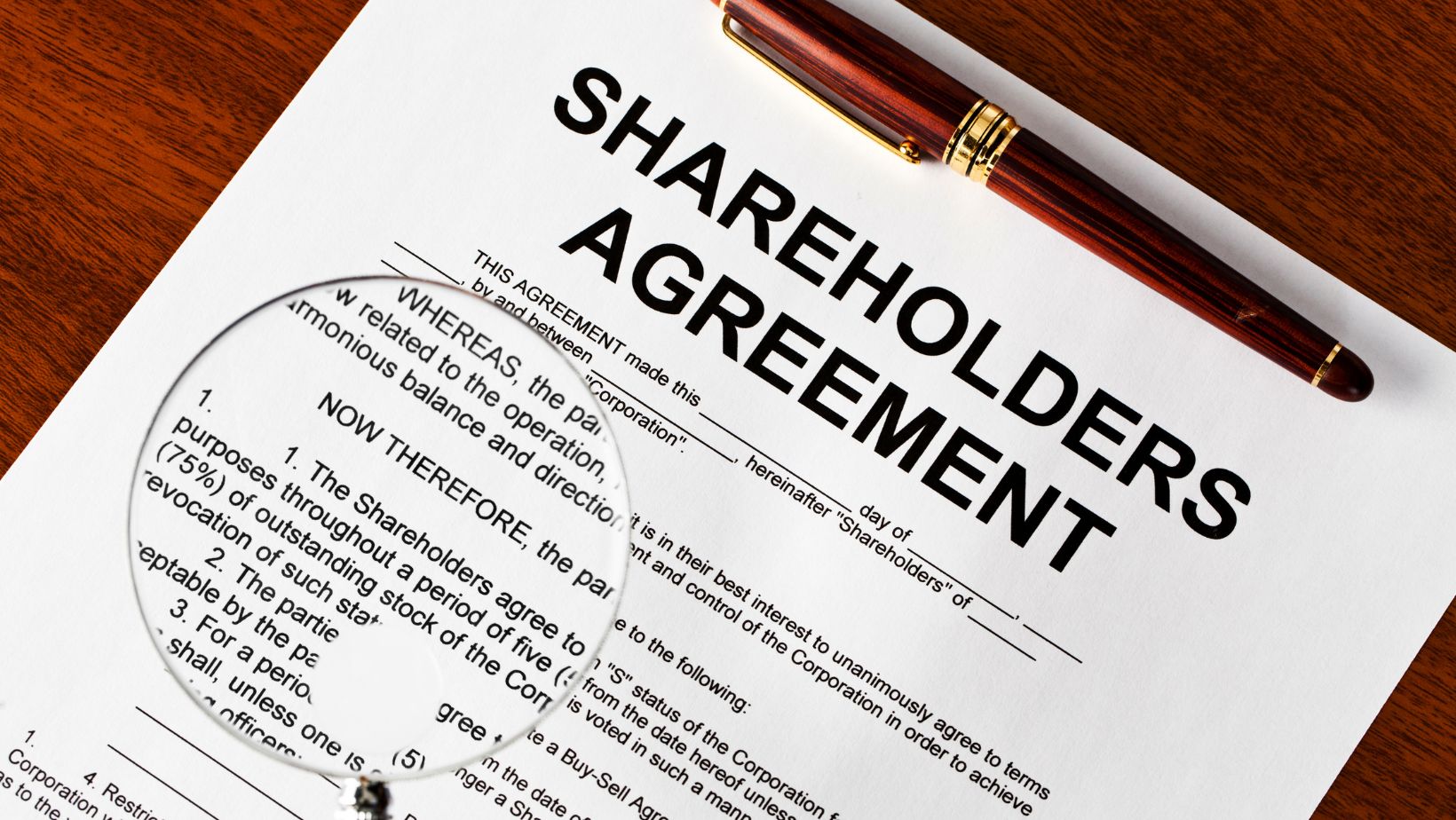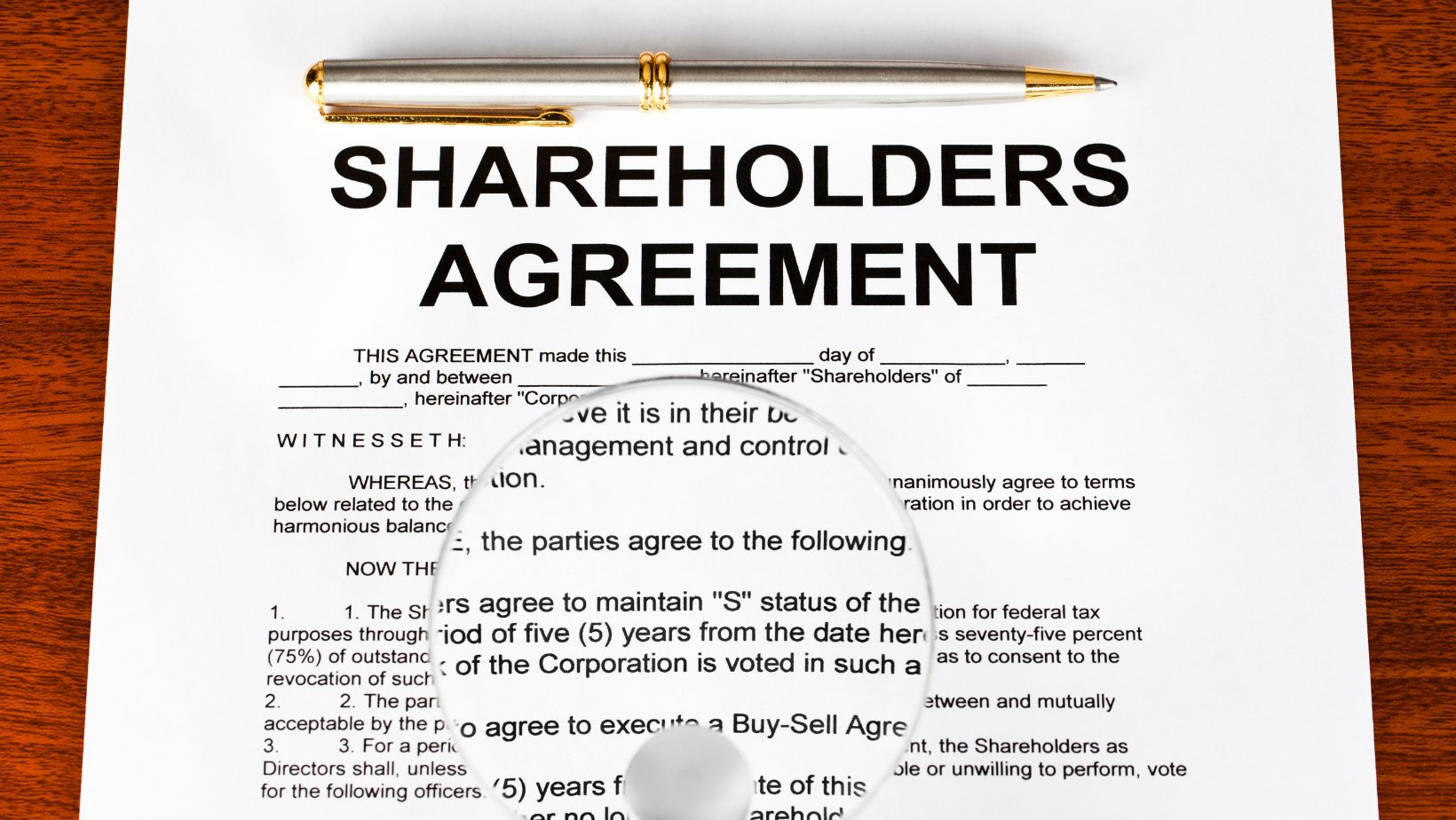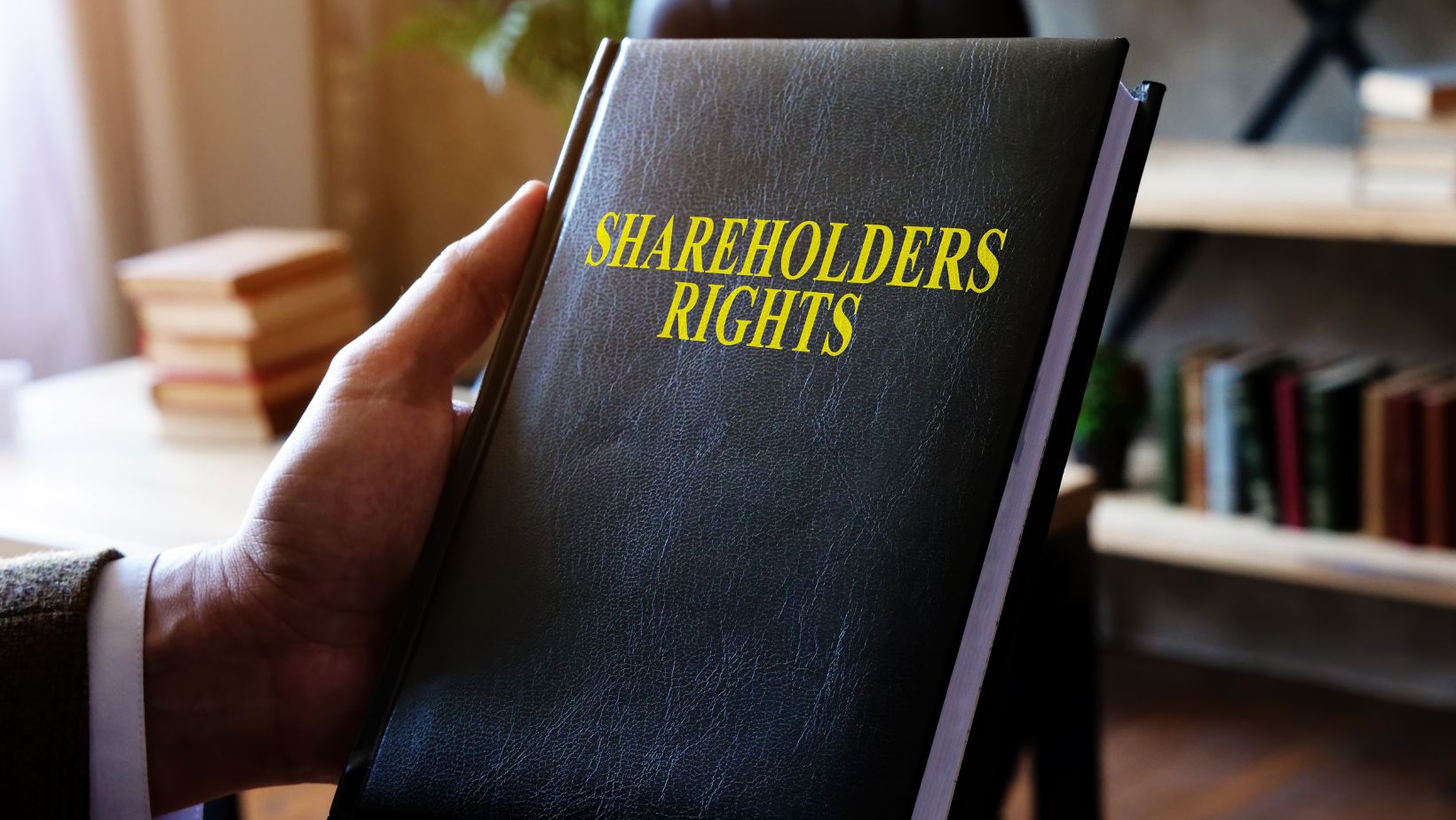 Starting a business with partners is an exciting venture, but having a solid foundation is crucial. Disagreements and conflicts can arise without a clear understanding of each partner’s roles, responsibilities, and expectations.
Starting a business with partners is an exciting venture, but having a solid foundation is crucial. Disagreements and conflicts can arise without a clear understanding of each partner’s roles, responsibilities, and expectations.
That said, this article will explore the intricacies of shareholder agreements, what they are, why they’re crucial, and how they can benefit your business.
What Is a Shareholder Agreement?
A shareholder agreement is a legal contract between a company’s shareholders that defines each shareholder’s rights, responsibilities, and obligations. It establishes a framework for managing the relationship among shareholders. It sets the rules governing various aspects of the business, including how key decisions are made, how shares can be bought or sold, and what happens during disputes.
The Importance of a Shareholder Agreement
A shareholder agreement is essential because it provides a solid foundation for the business, aligning shareholder expectations, avoiding conflicts, and protecting the company’s interests. Here are more reasons why a shareholder agreement is crucial for your business:
Clarifies Roles, Rights, and Responsibilities
One of the primary purposes of a shareholder agreement is to clearly define each shareholder’s roles, rights, and responsibilities. Many businesses, especially as they grow, need to be clear about who has the authority to make specific decisions, how voting rights are distributed, and what responsibilities each shareholder holds.
By addressing these issues in a shareholder agreement, businesses create a roadmap for governance and accountability. This clarity minimizes misunderstandings, enhances trust, and ensures everyone involved is on the same page, fostering a more cohesive working environment.
Protects Minority Shareholders
Shareholder agreements protect minority shareholders, who may feel sidelined in decision-making processes. There is often a power imbalance in businesses with one or several majority shareholders, where those with more significant shares can dominate decisions.

A well-crafted shareholder agreement can address this imbalance by including provisions to protect the interests of minority shareholders. For example, it might grant them certain veto powers on critical matters or require that certain decisions receive unanimous approval, giving minority shareholders a voice on important issues.
Provides Guidelines for Conflict Resolution
Disputes among shareholders can be highly disruptive and even threaten a business’s survival. A shareholder agreement mitigates this risk by establishing clear guidelines for conflict resolution, such as defining preferred dispute resolution methods like mediation, arbitration, or specific courts. If desired, this structure helps ensure disputes are addressed swiftly, effectively, and outside the public eye.
Knowing there’s a process for handling disagreements helps shareholders focus on the company’s goals rather than internal conflicts. Additionally, pre-set protocols in the shareholder agreement prevent prolonged disputes that could otherwise drain resources, damage relationships, and create uncertainty within the organization.
Defines Exit Strategies and Share Transfers
Exit strategies are crucial, especially when shareholders wish to leave or sell their shares. Without a shareholder agreement, share transfers or exiting can lead to significant disruptions, disputes, and even unintended ownership changes. The agreement provides a structured way to handle these scenarios by setting share sales and transfer conditions.
For instance, a right of first refusal clause can give existing shareholders the option to buy shares before they are sold to external parties, maintaining control within the company. Additionally, the agreement can outline the process for valuing shares, ensuring fair treatment for departing shareholders. With these exit strategies in place, businesses can avoid conflicts over ownership and maintain their stability, even as shareholders come and go.
Ensures Continuity and Stability
Businesses thrive on stability and continuity, but unexpected events—such as a shareholder’s death, incapacitation, or resignation—can throw a company into turmoil if not planned for. Shareholder agreements often include ‘purchase-sell’ provisions that specify what happens in these scenarios.

Such provisions ensure the business can carry on smoothly, with a clear transition plan, even during difficult times. By safeguarding the company’s structure and reducing the potential for upheaval, these agreements help reinforce stability, giving all stakeholders peace of mind.
Protects Confidentiality and Intellectual Property
Shareholders often have access to valuable and sensitive information about a business, including trade secrets, financial data, and intellectual property. Without appropriate protections, there’s a risk that shareholders might misuse or share this information outside the company, potentially harming its competitive edge.
A shareholder agreement can address this by including strict confidentiality and non-compete clauses, ensuring that shareholders don’t use proprietary information for personal gain or in competing businesses. This protection is essential for businesses reliant on proprietary methods, technologies, or other intellectual property, as it helps secure their innovations and market position.
Sets Expectations for Business Growth and Profit Distribution
Setting clear expectations for business growth and profit distribution is vital to avoid misunderstandings and conflicts later. A shareholder agreement can establish specific guidelines for handling profits, including reinvestment strategies, dividend policies, or other distributions.
The agreement ensures that all shareholders align with the company’s financial strategy and growth objectives by detailing these aspects. This alignment prevents future disagreements and fosters a sense of shared vision, with all shareholders working toward common goals for the business’s long-term success.
Defining rights, responsibilities, and procedures for various situations reduces the potential for conflicts, provides security for all shareholders, and ensures the company’s continuity and stability.
Conclusion
A shareholder agreement is more than just a legal formality; it’s a strategic tool that can significantly impact your business’s future. By addressing key issues such as ownership, voting rights, dividends, and exit strategies, this agreement can provide a solid foundation for your partnership and protect your interests.















